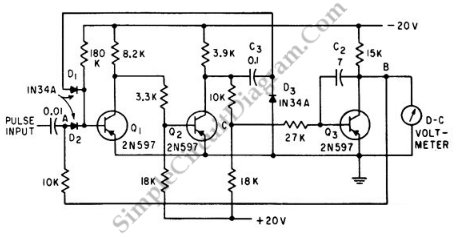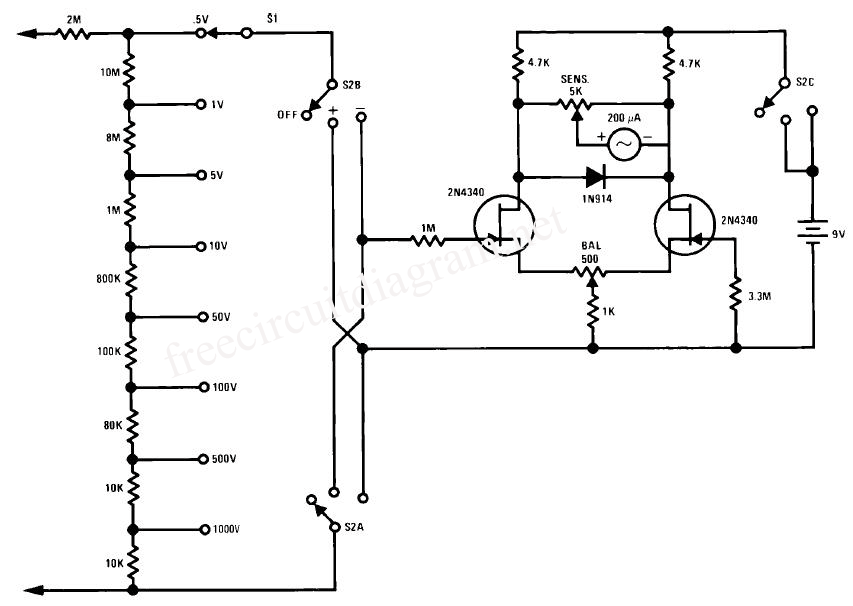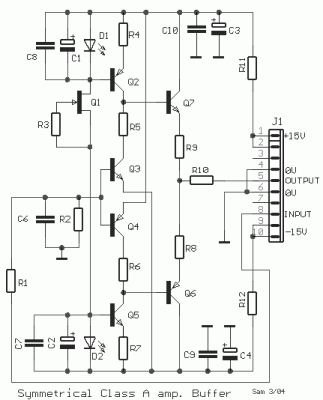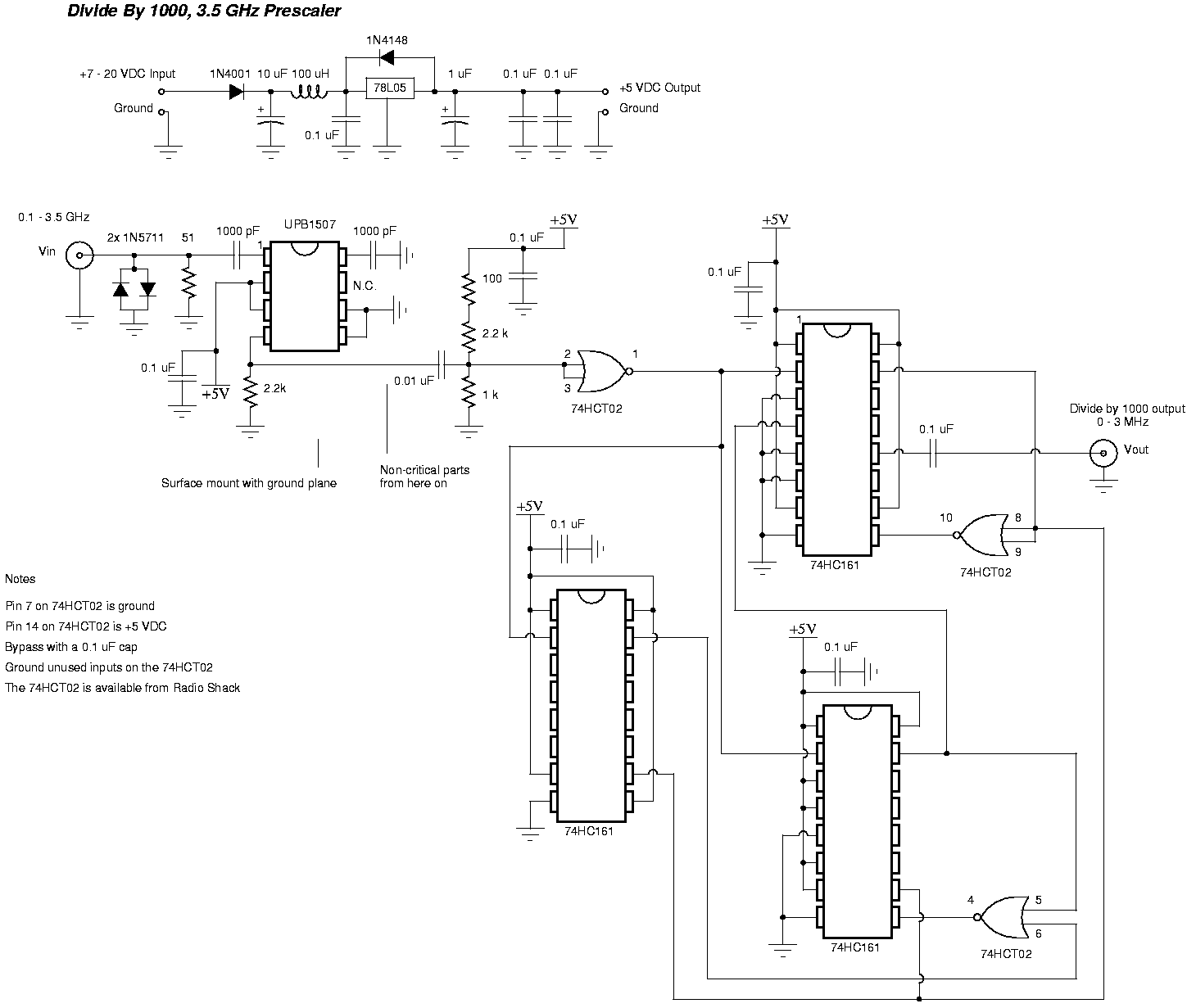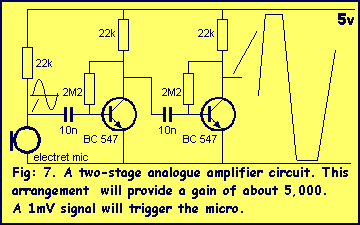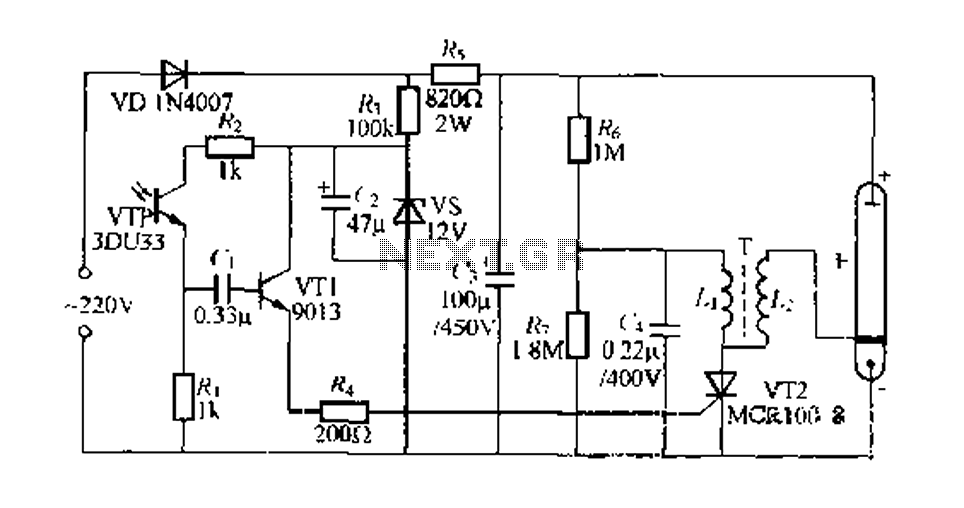
Build an Analog Bar Graph Expanded Scale Voltmeter

An expanded scale voltmeter (ESV) can be crucial for aircraft operation. This assertion is based on the dependency of the radio link, which allows control of the aircraft, on nickel-cadmium (NiCd) batteries located in both the transmitter and receiver. If either of these batteries becomes depleted, control may be lost, potentially resulting in a crash or the aircraft flying away. Unlike typical alkaline or zinc-carbon batteries, NiCd cells exhibit a flat discharge curve, maintaining a relatively stable output voltage (approximately between 1.28V and 1.17V) until they are nearly exhausted, at which point the voltage drops sharply. Therefore, using a standard analog voltmeter is ineffective, as it consistently reads around 1.2V regardless of the remaining charge. A digital voltmeter provides slight improvement due to its higher resolution, but it still fails to provide an accurate indication of charge, particularly since NiCd cells can display full voltage even when they are nearly depleted.
The ESV enhances measurement accuracy by focusing on the critical voltage range of NiCd cells. For instance, an ESV designed for testing a single NiCd cell would have a scale from 1.17V to 1.28V, allowing for precise voltage changes to be observed. Additionally, the ESV applies a known load to the cells during testing, which is essential for accurately assessing their state of charge. This method is akin to evaluating cardiovascular fitness through activity rather than at rest. Instead of traditional analog or digital displays, the ESV employs a bar graph display with eight LEDs. If no LEDs illuminate, the tested NiCd battery is dead; if all are lit, the battery is nearly fully charged. A switch allows the selection of the number of cells being tested, either four for receiver batteries or eight for transmitter batteries, with the majority of these batteries being AA cells.
The battery under test is connected to the positive and negative inputs. Depending on the position of switch S1, the battery voltage is routed through resistors R1a to R1d (for a four-cell battery) or also through resistors R2a to R2d (for an eight-cell battery), creating a load of approximately 200mA. The voltage across the R1 resistors is measured, representing the full battery voltage when testing four cells, and half the voltage when testing eight cells due to the voltage divider formed by R1 and R2 resistors. The test voltage is fed into one input of eight voltage comparators (Z1a to Z2d), while the other input connects to an 8-way voltage divider constructed from resistors R4 to R10. A stable voltage reference is provided by resistor R3 and Zener diode D1 to supply this divider. Resistor R20 sets the upper voltage level of the divider, while resistors R11 and R21 define the lower level. R20 and R21 should be calibrated to yield 5.13V and 4.66V at the top and bottom of the divider, respectively. When the test voltage surpasses the voltage at a specific comparator, its output goes low, illuminating the corresponding LED. Thus, if the test voltage exceeds 5.13V, all LEDs illuminate, while if the voltage is below 4.66V, none will light. Resistors R4 through R10 are selected to generate evenly spaced voltage levels along the battery's discharge curve, enabling accurate monitoring of battery performance and state of charge.An expanded scale voltmeter (ESV) can save your plane. That may be a strong statement, but it`s true. The crucial radio link that lets you control your plane relies on nickel-cadmium (NiCd) batteries in the transmitter and receiver. If either of these batteries goes dead, you`ll lose control and your plane will likely crash or fly away.
Unlike car bon-zinc or alkaline cells, NiCd cells have a very flat discharge curve. This means that their output voltage remains relatively constant (ranging from about 1. 28V down to 1. 17V) until they are almost dead, and then drops off suddenly. Testing the voltage with an ordinary analog voltmeter is therefore nearly useless, because it will always read close to 1. 2V no matter how much charge is left. A digital volt meter would be a slight improvement, because it has enough resolution to show the changes in this narrow range.
However, another characteristic of NiCd cells is that they tend to show full voltage when they aren`t doing anything, even if they are almost completely dead. If you use a resistor to discharge a NiCd cell to 0V (this is not recommended), and then remove the resistor and wait a few minutes, measuring the voltage will still indicate about 1.
2V. First, it acts like a magnifying glass on part of the scale of an ordinary meter, namely the part of the scale we are interested in. For example, an ESV for testing a single NiCd cell would range from 1. 17V at one end of the scale to 1. 28V at the other end of the scale. With the full scale covering this narrow range, it`s easy to see voltage changes within the range. Secondly, and ESV applies a known load to the cells while it`s testing them. Only by testing them while they are doing a known amount of work can one accurately get an estimate of their state of charge (just like you can`t assess your cardiovascular fitness by measuring your pulse and breathing while you are resting).
Instead of an analog meter movement or a digital display, the ESV described in this article uses a bar graph display consisting of eight LEDs. If no LEDs are lit, the NiCd battery being tested is dead. If all the LEDs are lit, it is close to fully charged. A switch selects the number of cells being tested, either four for receiver batteries, or eight for transmitter batteries.
The vast majority of receiver and transmitter batteries consist of AA cells, and this ESV is calibrated for those types of cells (larger, lower-resistance cells will show a higher voltage for a given load than will the smaller cells). The battery being tested is connected to the + and - inputs. Depending on the setting of switch S1, the battery voltage is applied across just R1a through R1d (to test a 4-cell battery), or also R2a through R2d (to test an 8-cell battery).
This will put a load of approximately 200mA on the battery. The voltage across the R1 resistors is what will be tested. When testing four cells, this is the full battery voltage. When testing eight cells, it is half the battery voltage, because the R2 and R1 resistors together form a voltage divider. The test voltage is applied to one input of each of the eight voltage comparators Z1a through Z2d. The other input of each comparator is connected to a point on an 8-way voltage divider, made up of R4 through R10.
R3 and Zener diode D1 form a stable voltage reference to supply this voltage divider. R20 sets the voltage at the top of the divider, and R11 and R21 set the voltage at the bottom. R20 and R21 should be adjusted to give 5. 13 and 4. 66V at the top and bottom respectively. Whenever the test voltage exceeds the divider voltage at a given comparator, the comparator`s output goes low, lighting the corresponding LED. So, if the test voltage exceeds 5. 13V, all the LEDs will light. If it is less than 4. 66V, none of the LEDs will light. Resistors R4 through R10 were chosen to produce voltages that are evenly separated in time along the battery`s
🔗 External reference
The ESV enhances measurement accuracy by focusing on the critical voltage range of NiCd cells. For instance, an ESV designed for testing a single NiCd cell would have a scale from 1.17V to 1.28V, allowing for precise voltage changes to be observed. Additionally, the ESV applies a known load to the cells during testing, which is essential for accurately assessing their state of charge. This method is akin to evaluating cardiovascular fitness through activity rather than at rest. Instead of traditional analog or digital displays, the ESV employs a bar graph display with eight LEDs. If no LEDs illuminate, the tested NiCd battery is dead; if all are lit, the battery is nearly fully charged. A switch allows the selection of the number of cells being tested, either four for receiver batteries or eight for transmitter batteries, with the majority of these batteries being AA cells.
The battery under test is connected to the positive and negative inputs. Depending on the position of switch S1, the battery voltage is routed through resistors R1a to R1d (for a four-cell battery) or also through resistors R2a to R2d (for an eight-cell battery), creating a load of approximately 200mA. The voltage across the R1 resistors is measured, representing the full battery voltage when testing four cells, and half the voltage when testing eight cells due to the voltage divider formed by R1 and R2 resistors. The test voltage is fed into one input of eight voltage comparators (Z1a to Z2d), while the other input connects to an 8-way voltage divider constructed from resistors R4 to R10. A stable voltage reference is provided by resistor R3 and Zener diode D1 to supply this divider. Resistor R20 sets the upper voltage level of the divider, while resistors R11 and R21 define the lower level. R20 and R21 should be calibrated to yield 5.13V and 4.66V at the top and bottom of the divider, respectively. When the test voltage surpasses the voltage at a specific comparator, its output goes low, illuminating the corresponding LED. Thus, if the test voltage exceeds 5.13V, all LEDs illuminate, while if the voltage is below 4.66V, none will light. Resistors R4 through R10 are selected to generate evenly spaced voltage levels along the battery's discharge curve, enabling accurate monitoring of battery performance and state of charge.An expanded scale voltmeter (ESV) can save your plane. That may be a strong statement, but it`s true. The crucial radio link that lets you control your plane relies on nickel-cadmium (NiCd) batteries in the transmitter and receiver. If either of these batteries goes dead, you`ll lose control and your plane will likely crash or fly away.
Unlike car bon-zinc or alkaline cells, NiCd cells have a very flat discharge curve. This means that their output voltage remains relatively constant (ranging from about 1. 28V down to 1. 17V) until they are almost dead, and then drops off suddenly. Testing the voltage with an ordinary analog voltmeter is therefore nearly useless, because it will always read close to 1. 2V no matter how much charge is left. A digital volt meter would be a slight improvement, because it has enough resolution to show the changes in this narrow range.
However, another characteristic of NiCd cells is that they tend to show full voltage when they aren`t doing anything, even if they are almost completely dead. If you use a resistor to discharge a NiCd cell to 0V (this is not recommended), and then remove the resistor and wait a few minutes, measuring the voltage will still indicate about 1.
2V. First, it acts like a magnifying glass on part of the scale of an ordinary meter, namely the part of the scale we are interested in. For example, an ESV for testing a single NiCd cell would range from 1. 17V at one end of the scale to 1. 28V at the other end of the scale. With the full scale covering this narrow range, it`s easy to see voltage changes within the range. Secondly, and ESV applies a known load to the cells while it`s testing them. Only by testing them while they are doing a known amount of work can one accurately get an estimate of their state of charge (just like you can`t assess your cardiovascular fitness by measuring your pulse and breathing while you are resting).
Instead of an analog meter movement or a digital display, the ESV described in this article uses a bar graph display consisting of eight LEDs. If no LEDs are lit, the NiCd battery being tested is dead. If all the LEDs are lit, it is close to fully charged. A switch selects the number of cells being tested, either four for receiver batteries, or eight for transmitter batteries.
The vast majority of receiver and transmitter batteries consist of AA cells, and this ESV is calibrated for those types of cells (larger, lower-resistance cells will show a higher voltage for a given load than will the smaller cells). The battery being tested is connected to the + and - inputs. Depending on the setting of switch S1, the battery voltage is applied across just R1a through R1d (to test a 4-cell battery), or also R2a through R2d (to test an 8-cell battery).
This will put a load of approximately 200mA on the battery. The voltage across the R1 resistors is what will be tested. When testing four cells, this is the full battery voltage. When testing eight cells, it is half the battery voltage, because the R2 and R1 resistors together form a voltage divider. The test voltage is applied to one input of each of the eight voltage comparators Z1a through Z2d. The other input of each comparator is connected to a point on an 8-way voltage divider, made up of R4 through R10.
R3 and Zener diode D1 form a stable voltage reference to supply this voltage divider. R20 sets the voltage at the top of the divider, and R11 and R21 set the voltage at the bottom. R20 and R21 should be adjusted to give 5. 13 and 4. 66V at the top and bottom respectively. Whenever the test voltage exceeds the divider voltage at a given comparator, the comparator`s output goes low, lighting the corresponding LED. So, if the test voltage exceeds 5. 13V, all the LEDs will light. If it is less than 4. 66V, none of the LEDs will light. Resistors R4 through R10 were chosen to produce voltages that are evenly separated in time along the battery`s
🔗 External reference
